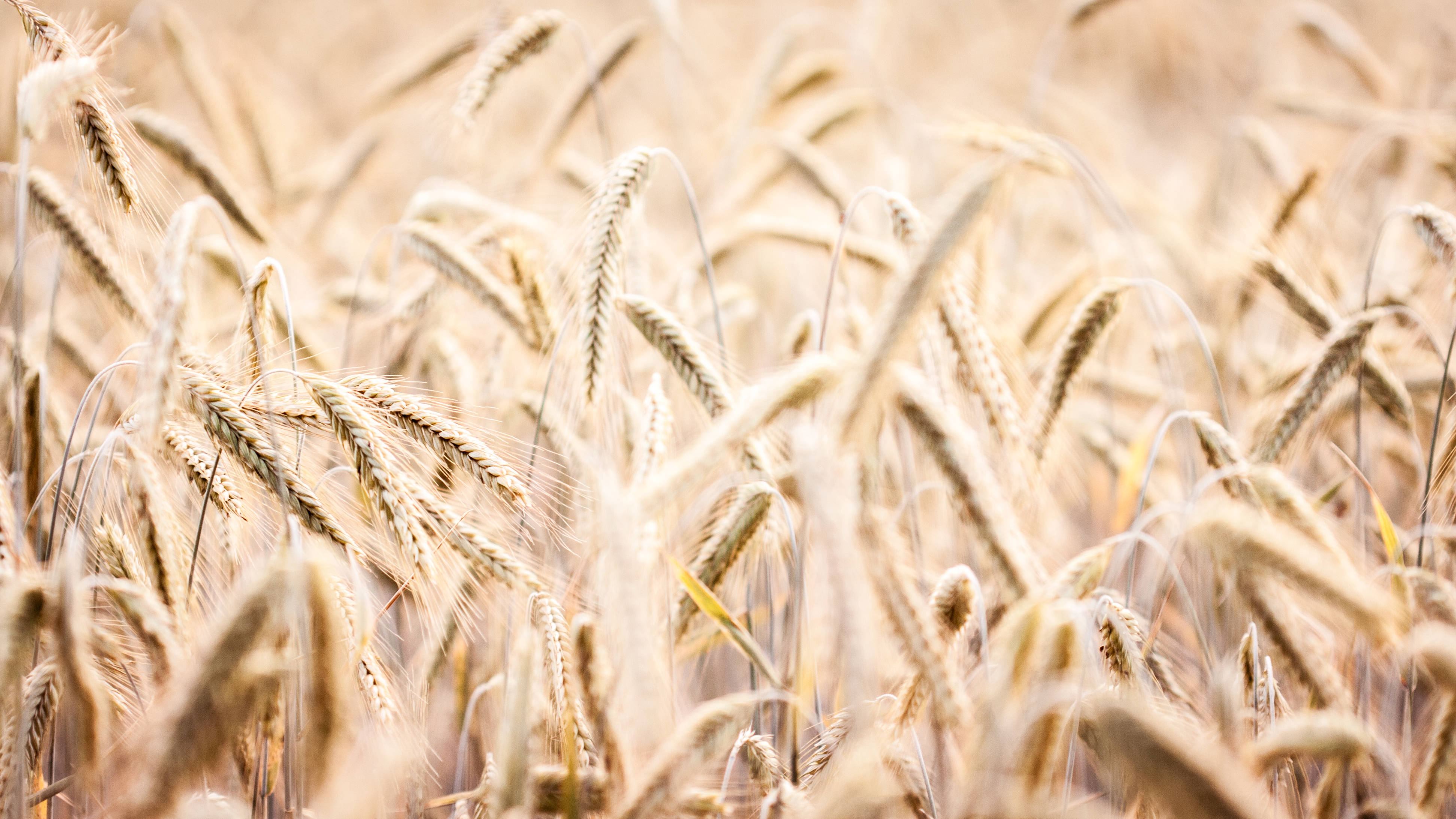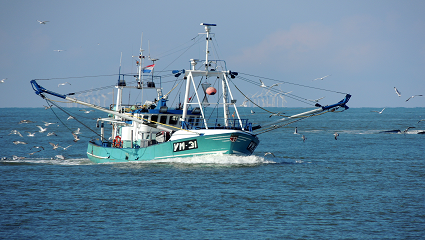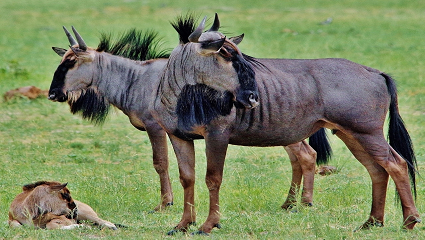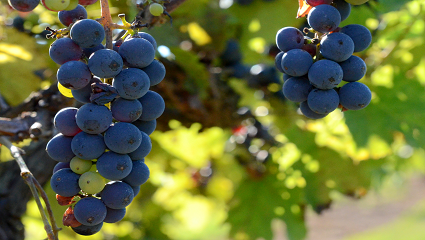-
 CoCA 2017Commercial agriculture is primary production in any of the three activities namely; farming, forestry and fisheries
CoCA 2017Commercial agriculture is primary production in any of the three activities namely; farming, forestry and fisheries -
 Crop ProductionCrop production is the growing of field and horticultural crops for food, fibre and fuel.
Crop ProductionCrop production is the growing of field and horticultural crops for food, fibre and fuel. -
 Livestock productionLivestock refers to the propagation of farm animals e.g. cattle, sheep, goats, pigs and poultry for the purpose of providing meat, eggs, milk, fibre, skin, feathers etc.
Livestock productionLivestock refers to the propagation of farm animals e.g. cattle, sheep, goats, pigs and poultry for the purpose of providing meat, eggs, milk, fibre, skin, feathers etc. -
 FisheriesIs mainly constituted of the harvesting of fishery resources from fresh water or marine environments and aquaculture.
FisheriesIs mainly constituted of the harvesting of fishery resources from fresh water or marine environments and aquaculture. -
 Game propagationThe propagation of game (wildlife) for a variety of products e.g. meat, hides
Game propagationThe propagation of game (wildlife) for a variety of products e.g. meat, hides -
 ForestryGrowing, maintaining and harvesting of standing timber as well as related forestry services
ForestryGrowing, maintaining and harvesting of standing timber as well as related forestry services
The history of South African agricultural statistics has reflected that as far back as 1918, the country has been conducting annual surveys and periodic censuses of agriculture.
Since the dawn of democracy, Stats SA conducted the Census of Commercial Agriculture for 2002 and 2007. The 2002 and 2007 censuses covered farming enterprises which are registered for tax. The 2012 Census of Commercial Agriculture was not funded and as such didn’t take place.
There has also been an increase in the user demand for small-holder farming data from all three spheres of government: national, provincial and municipal. Because of this increasing pressure, Stats SA first responded by including questions in the Population Survey 2011, where each household was asked on the type of agricultural activity (livestock, poultry, crops or vegetables) they were involved in. Thus, Stats SA was able to identify 2,9 million agricultural households in 2011.
Furthermore, questions related to households’ involvement in agriculture were included in the Community Survey 2016. This enabled Stats SA to also estimate the number of various types of livestock owned by agricultural households. The number of agricultural households identified in 2016 was 2,3 million. However, there are still data gaps on farmer profile (age, gender and population group), farm size, employment and use, land tenure, detailed livestock numbers, and the use of machinery, as well as the number of holdings with each crop and livestock type.
As a country we are still not in a position to conduct a census/ survey of small-holder agriculture since we don’t have a comprehensive frame which is geo-referenced.
Thus, Stats SA signed an MoU with the Department of Agriculture, Forestry & Fisheries (DAFF) early in 2018, according to which:
- Stats SA is to conduct a Census of Commercial Agriculture for 2017 (CoCA 2017), and
- DAFF is to develop a Farmers’ Register, with special focus on small-holder farmers.
This register will in future be used to conduct a comprehensive survey/ census of commercial and small-holder agriculture.
Census of Commercial Agriculture 2017 : Statistician General, Risenga Maluleke
Statistics South Africa is set to conduct a countrywide Census of Commercial Agriculture from 15 October 2018.
Data collected from the survey is important in painting a picture on size and structure of the agriculture sector, contribution of the sector to national accounts, and employment figures.
COCA 2017 FOCUS
The census will mainly cover farmers on the Stats SA’s Business Register (BR) that are engaged in any form of agriculture, fisheries and forestry activity as classified by the 1993 Standard Industrial Classification (SIC) of all Economic Activities who sell their products to the market for income. Thus, the activities covered will be crop production, livestock farming, fisheries (including marine aquaculture), game farming and forestry.

Field Crop
Field crops are crops grown on large commercial scale, often in an open field. Most of the grain crops are field crops. Examples include maize, wheat, rice, sorghum, beans, sugarcane etc. Field crops can be grown either with or without irrigation.

Forestry
Forests include plantations, natural/indigenous forests and woodlands/savannas. Forestry includes all activities linked to these forests and woodlands.

Fisheries
People involved, species or type of fish, area of water or seabed, method of fishing, class of boats, and purpose of the activities or a combination of the foregoing features.

Game farming
Involves commercially breeding and keeping of wild animals (also referred to as game). Examples of wild animals include Herbivores (feed on grass) such as Elephants, buffalo, springbok, impala, kudu etc. and Carnivores (feed on meat) such as lions, Leopards, Hyenas etc

Livestock
Livestock refers to domesticated animals (e.g. cattle, sheep, goats, pigs and poultry) irrespective of the purpose of their breeding.

Horticulture
Is the growing of crop such as fruit, vegetables, herbs, flowers, etc., to mention but a few, for consumption, fibre, etc.
Importance of CoCA
A census of agriculture is a statistical operation for collecting, processing and disseminating data on the structure of agriculture, covering the whole or significant part of the country (FAO, 2015). Agricultural surveys provide fundamental data on the organisational structure of agricultural holding, such as farm size, land use, land tenure, livestock numbers, and the use of machinery, as well as the number of holdings with each crop and livestock type.According to FAO (2015), structural information of this type has a wide range of uses including:
- Agricultural planning
Contributing to the development of policies on food security or gender issues, and promoting agricultural production and investments, economic growth, rural development.
- Research, investment and business decisions
Providing crucial data for the research and appraisal of the composition, distribution past and prospective growth of the sector.
- Agriculture and the environment
Helps decision-makers and planner when adopting measures to mitigate adverse effects.
- Food security
Providing data for assessing severity of food insecurity.
- Work in agriculture
Supporting labour and other social policies related to the quality of employment through the provision of data on status in employment of main job and on forms of payment on an annual basis.
- The role of gender in agriculture
Providing gender disaggregated data to help monitor progress towards achieving gender equality goals.
- Baseline data for Methodology and Evaluation
Giving detailed structural data for small geographic areas.
- Contribution of agriculture in national accounts
Information to define structural components of the national accounts, data as inputs of the System of Environmental- Economic Accounting (SEEA), or for benchmarking (establishment of base year) national accounts.
Contacts


